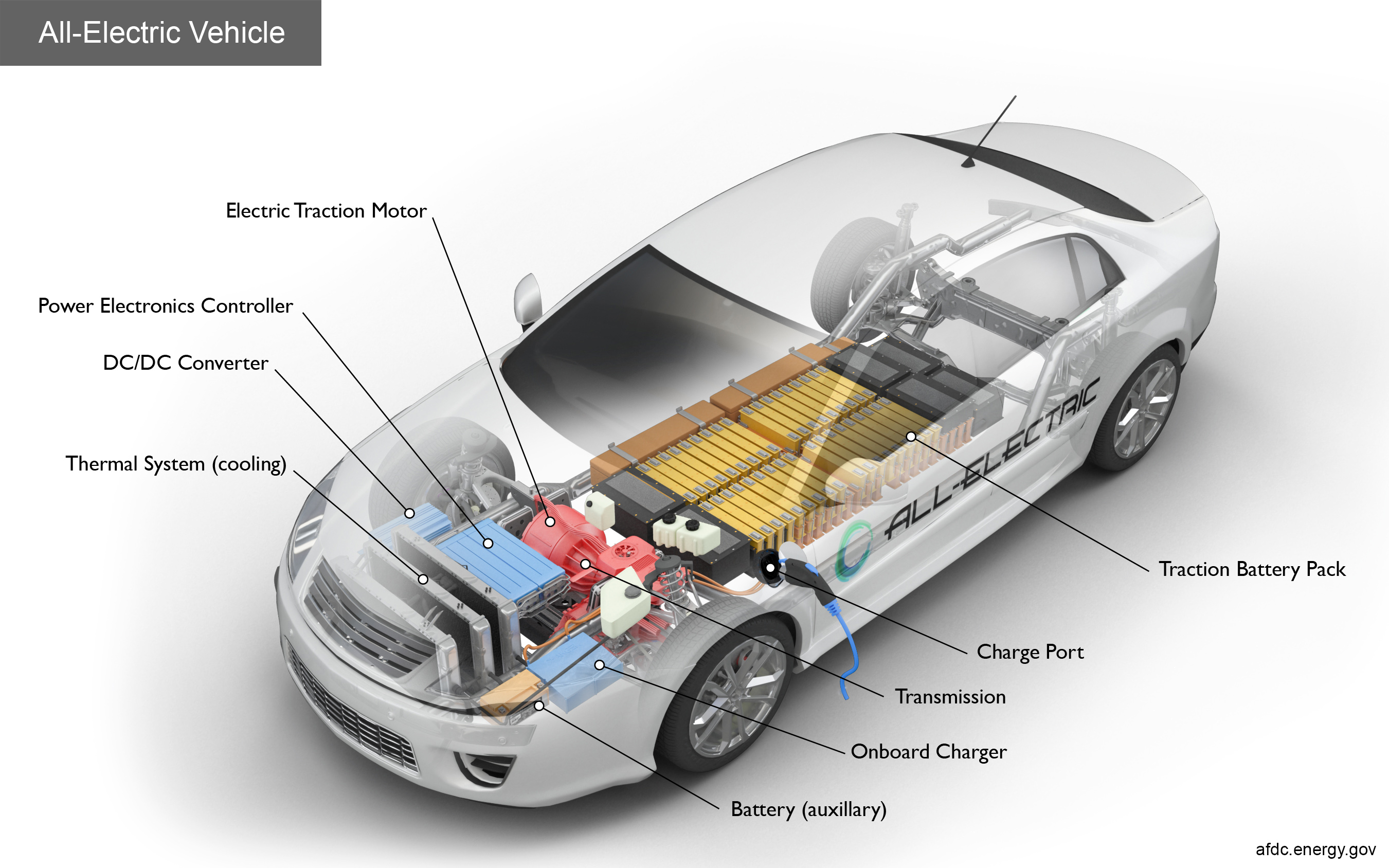Module 8: Diffusion of Innovations
Exploring the Diffusions of Electric Vehicles through Diffusion Theory
Everett Rogers' Diffusion of Innovations theory can be defined as a theory that seeks to explain how, why, and at what rate new ideas and technology spread. It involves five key elements: the innovation itself, adopters, communication channels, time, and the social system. Adopters are categorized into five groups: Innovators, Early Adopters, Early Majority, Late Majority, and Laggards (link).
Electric vehicles (EVs) are an excellent illustration of current innovations transforming the automobile industry. The popularity of EVs has grown in recent years, thanks to a focus on sustainability, lower carbon footprints, and technological advancements. EVs are a key advance, providing a viable alternative to traditional internal combustion engine vehicles. The key benefits of EVs include decreased emissions, lower running costs, and the ability to integrate with renewable energy sources.
Innovators are the first to adopt an innovation. In the case of EVs, these are frequently technology enthusiasts and environmentalists who are ready to take chances with experimental technology. Companies such as Tesla played an important role by delivering high-performance, attractive EVs that drew these Innovators. Following the Innovators are the Early Adopters, who are frequently regarded as opinion leaders in their communities. Early Adopters of EVs were motivated by environmental concerns, rising gasoline prices, and government incentives such as tax refunds. These early adopters contributed to the legitimacy and visibility of electric vehicles.
The Early Majority adopts new technology before the average person but requires proof of its benefits. As charging infrastructure improved, battery technology matured, and more inexpensive models became available, the Early Majority began to adopt EVs, owing to practical benefits and the influence of Early Adopters. On the other side, the Late Majority is dubious and embraces innovations later than the typical member of society. For EVs, this group required widespread acceptance and proven reliability. As EVs' resale value increased and worries about range anxiety were resolved, the Late Majority began to see EVs as a viable alternative.
Laggards are the last to adopt an invention, typically due to opposition to change or budgetary restrictions. For EVs, this segment may continue to favor traditional vehicles due to concerns about charging infrastructure in rural locations, high initial prices, or simply a preference for traditional technology.
Non-Adopters and Their Reasons
Despite the increasing popularity of electric vehicles, some people are still hesitant to adopt them. Even as prices fall, high initial costs can remain a barrier. Inadequate charging infrastructure in some locations discourages adoption, while range anxiety, or concerns about how far an electric vehicle can travel on a single charge, persists. Furthermore, some people prefer the familiarity and perceived dependability of conventional internal combustion engines. Misconceptions regarding EV performance, maintenance, and benefits add to potential adopters' reluctance.
While EVs provide various advantages, there are also some drawbacks. The manufacturing and disposal of EV batteries raises environmental and ethical challenges, especially the extraction of rare minerals. The transition to electric vehicles could have a severe impact on jobs in the production and maintenance of internal combustion engines, causing economic issues. Furthermore, increased electrical demand may strain the grid, necessitating further infrastructure investment and raising concerns about energy sustainability.
Adopting a new technology, such as EVs, requires assessing the benefits against the negatives. The advantages include lower pollutants, lower operational costs, and technical breakthroughs. However, the disadvantages, such as high initial prices and environmental concerns associated with battery production, must be considered. Individuals who do not use social media typically face a similar cost-benefit analysis. Potential drawbacks include privacy problems, time commitments, and mental health consequences. The advantages could include keeping connected, getting information, and personal branding. The decision to adopt or reject is based on how these aspects balance for each individual.
Conclusion
The diffusion of electric vehicles exemplifies how innovations spread across society, driven by a variety of variables and adopter groups. Understanding the motivations for adoption, the reservations of non-adopters, and the potential drawbacks provides useful insights into the larger process of technological adoption. As with any new technology, the decision to use EVs or social media requires careful analysis of the costs and advantages, which ultimately reflect individual preferences and societal trends.



Comments
Post a Comment